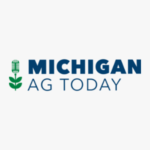
The Small Business Administration (SBA) recently released its rules for the Paycheck Protection Program (PPP), a new guaranteed $349 billion loan program for small businesses to keep their employees on the payroll.
Agricultural enterprises that meet the size requirements are eligible to apply for the PPP, created within the recently approved Coronavirus Aid, Relief, and Economic Security Act (CARES). It’s currently available through June 30, 2020.
According to Michigan Farm Bureau National Legislative Counsel John Kran, eligible businesses include sole proprietorships, self-employed individuals, and independent contractors – with 500 or fewer employees. Maximum revenues are defined by NAICS code, with many capped at $1 million.
For a list of NAICS codes for ag sectors click here.
“For farm operations meeting those specific criteria, PPP might be very helpful in light of the COVID-19 related economic downturn,” Kran said. “Loans are capped at $10 million but can include up to eight weeks of the businesses average monthly payroll costs from the last year plus an additional 25 percent for non-payroll costs.”
The loan will be forgiven if:
- All employees are kept or quickly rehired and compensation levels are maintained for eight weeks (payroll costs are capped at $100,000 on an annualized basis for each employee).
- The funds are used for:
- Payroll and benefits,
- Mortgage interest incurred before Feb. 15, 2020,
- Rent, under lease agreements in force before Feb. 15, and
- Utilities, for which service began before Feb. 15.
Borrowers will still owe money if:
- The loan amount is used for anything other than payroll costs, mortgage interest, rent, and utility payments over the eight weeks after getting the loan.
- Due to the likely high subscription, it is anticipated that not more than 25% of the forgiven amount may be for non-payroll costs.
- You do not maintain your staff and payroll.
Farmers can apply for the PPP through any existing SBA 7(a) lenders or any federally insured depository institution, federally insured credit union, and Farm Credit System institution that is participating.
Applications can begin on:
- April 3, 2020, for small businesses and sole proprietorships through existing SBA 7(a) lenders, and
- April 10, 2020, for independent contractors and self-employed individuals through existing SBA 7(a) lenders.
All federally insured depository institutions, federally insured credit unions, and Farm Credit System institutions that are not existing SBA lenders can begin making loans once they are approved and enrolled in the SBA program. New lenders will need to submit their application to DelegatedAuthority@sba.gov to apply with the SBA.
To learn more about the PPP loan program, visit the following SBA and Treasury Department websites:
PPP Borrower Information Sheet
Kran advises producers to not confuse SBA’s PPP program with another SBA loan program known as the Economic Injury Disaster Loan program, or EIDL, which excludes agricultural enterprises.
“These are two different programs administered by the SBA,” Kran said. “The EIDL program is much more expansive because they include payroll, fixed debts (mortgage, rent, lease), accounts payable and other expenses.”
What if your farm operation is above the maximum revenue threshold for PPP?
Employee Retention Benefits
Another possible option for farm operations to consider if they exceed the PPP revenue threshold, the Employee Retention Benefits, or ERB, is a refundable credit against employer payroll for certain employers who are hurt by COVID-19 but retain their employees.
The credit would be for 50% of eligible employee wages paid after March 12, 2020, and before Jan. 1, 2021. It would be provided for as much as $10,000 of compensation, including health benefits.
Employers could receive the credit if:
- A government order related to the pandemic requires them to partially or fully suspend operations, or if their gross receipts declined by certain thresholds.
- An employer who has more than 100 full-time employees in 2019 would receive credits for wages paid to employees while they aren’t providing services.
- They, with fewer than 100 employers, paid wages to all employees, regardless if they provided services or not, while operations were suspended or during the quarter in which the company had a significant decline in gross receipts.
Who is not eligible:
- Employers couldn’t receive the credit if they receive a loan under the SBA Paycheck Protection Program for loans established by the bill.
- Employers couldn’t use the credit for wages for which they also receive a credit under the work opportunity tax credit or a paid leave credit established by the 2017 tax overhaul (Public Law 115-97). Wages considered for the paid leave credits established under the second coronavirus response law (Public Law 116-127) couldn’t also be used for the employee retention credit.
For more information, visit this link to the IRS Website.
Michigan Farm Bureau and Michigan Farm News are committed to providing its members and readers with the latest news and information on the COVID-19 pandemic. For news, updates and resources, visit https://www.michfb.com/MI/Coronavirus/. The page will be updated daily as more information becomes available.
